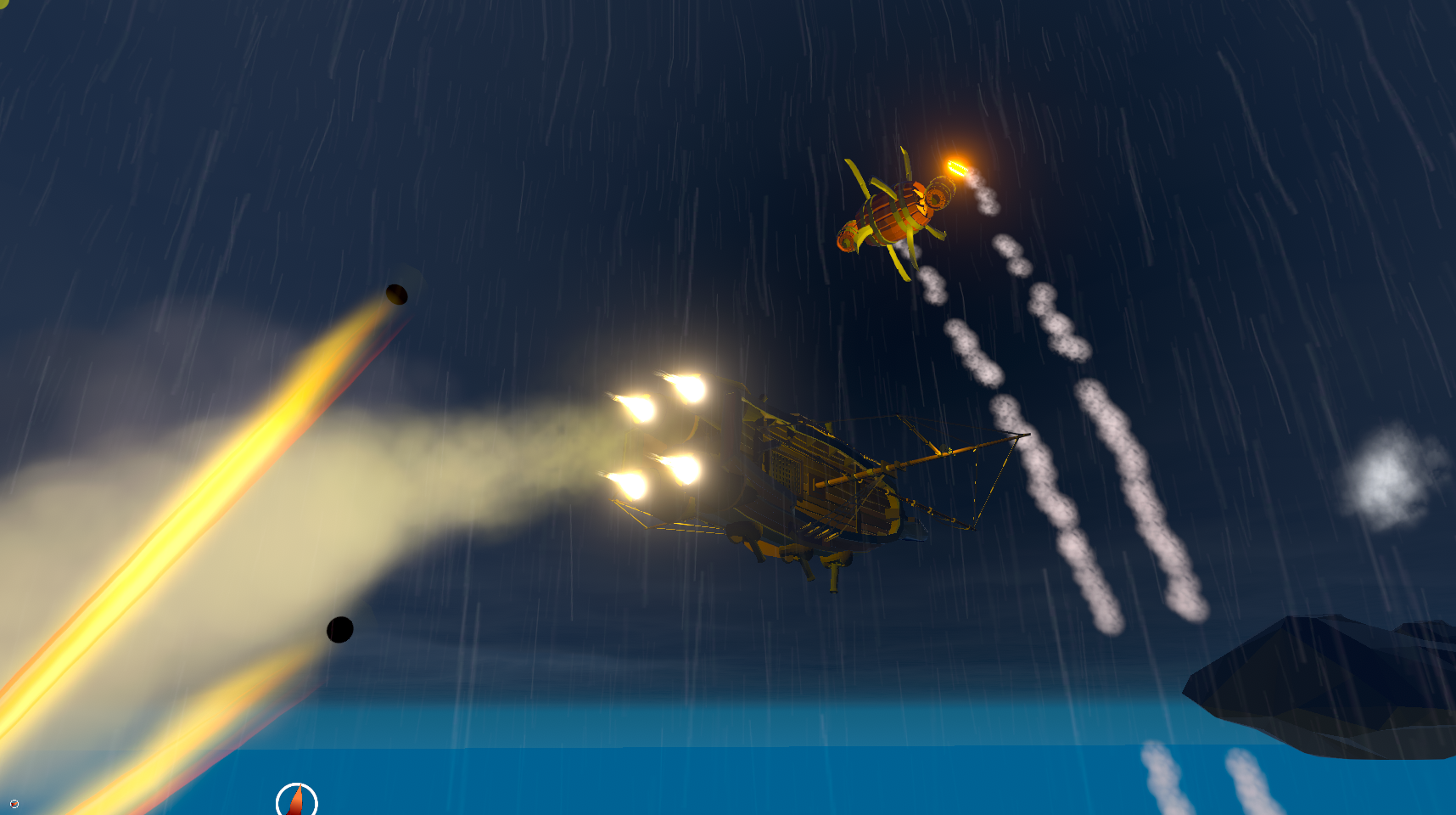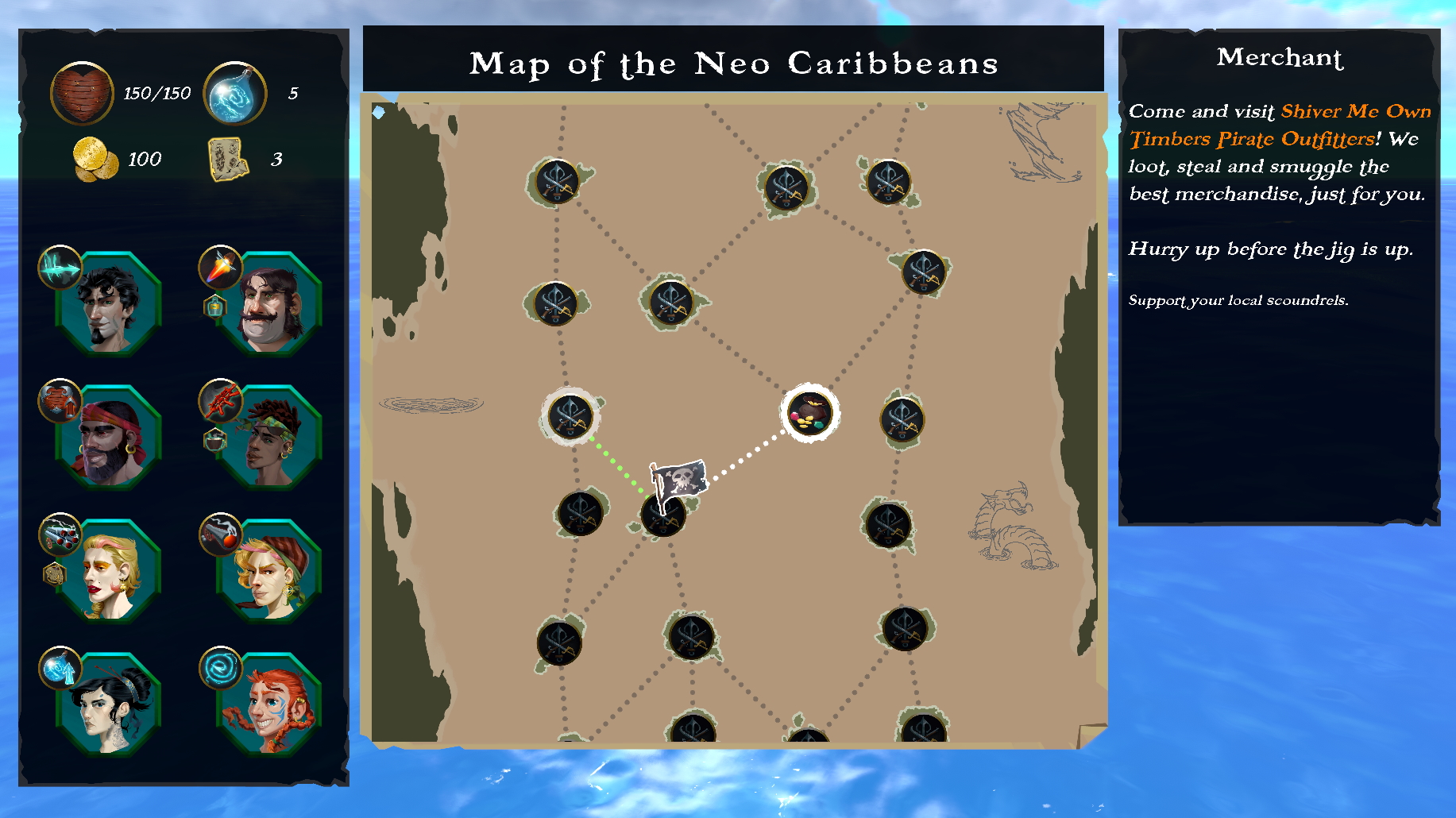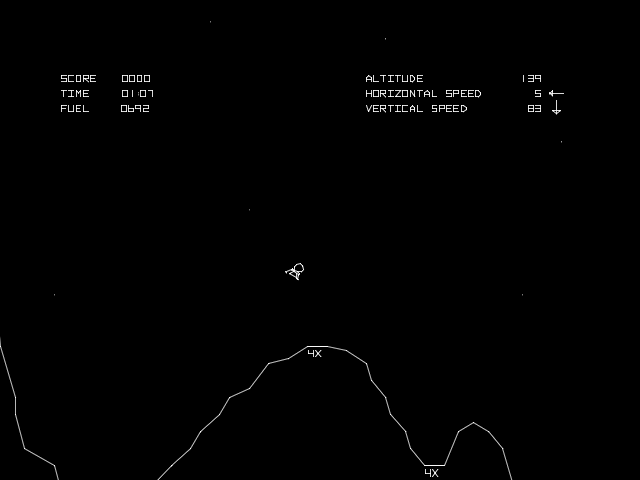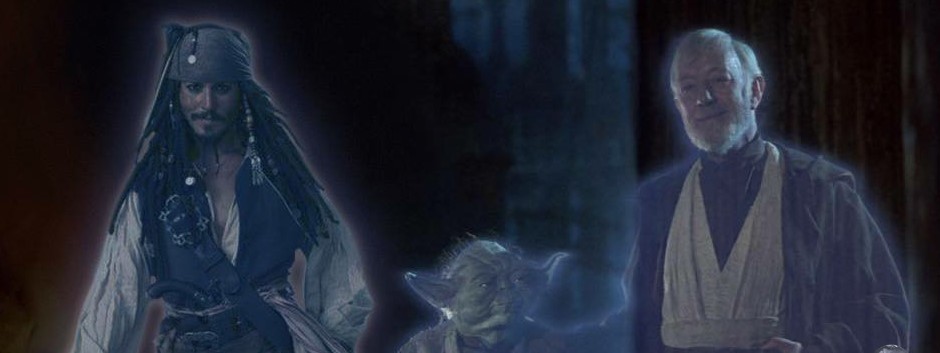Design Influences Behind Pirates of Gravitae
Now that Pirates of Gravitae (PoG henceforth) has been out in alpha form for about a week now, I feel like I should write about the core design and narrative ideas in the game, before I get too carried away with everything that needs to get done for the Beta release.
The Genesis
PoG, in its first iteration, had nothing to do with pirates. It started out as a game I was making just to entertain my children. The most direct inspiration was the Atari game Lunar Lander, where the goal was to land a rocketship without crashing. The current default control scheme in PoG where you left-mouse click to engage the thrusters is a direct descendant of that idea. Over time my kids asked me to add other things: pirates, islands, a robot pilot, among other random assortment of ideas. Somewhere along the way, I pictured it turning into a game about an island hopping pirate rocketship: Kerbal Space Program with pirates, if you will.
It was only after I was asked to add other ships that I started thinking of the game in its current form. When I got laid off from the previous project I was working on in the Spring of 2021, I realized that I had a promising idea in my hands with a rough but fun to play prototype.
Design Influences: Combat
Luftrausers is probably the easiest thing that comes to mind in terms of dogfighting action on a 2D plane, but my first introduction to the idea was Wings of Fury on the Amiga, which I remember to be more of a dogfight game whereas Luftrausers was too close to the bullet hell genre for my liking. I did not want to have dozens of enemies and hundreds of flashing projectiles on the screen in PoG, I wanted it to feel like actual vessels trying to outmaneuver each other. Which is why a good chunk of my time working on PoG was spent polishing the AI.
The AI in the game navigates the same physics-based world that the player ship does. Enemy ships are affected by gravity, momentum, winds, impulses from collisions, and they need to figure out how to fly and fight while dealing with all these factors. There is no simple "move/tween" animation for the enemies; every frame they calculate how much to steer and thrust, while trying to anticipate where the player is going to be. This was the key to making the enemies move and feel like you are fighting somewhat intelligent foes and not just simple drones. In fact I was able to make them good enough at it that I ended up having to handicap them so the player could have a fighting chance. If you were wondering why enemy projectiles seem to fly slower than the player's, that's why. :)

Other influences, which may not be too obvious in the current iteration of the game, were the multitude of Lucas Arts Star Wars simulators, like X-Wing, Tie Fighter, and others (also a shout out to Freespace here, the best space sim ever). PoG does not go that far into the simulation end of flight, but I intend and try to have some of that feel here and there. Adding weather conditions was an idea I partially borrowed from Freespace 2 nebula missions, although the mechanics are not the same.
Design Influences: Meta Game
The last decade have given us really great innovations in this area, I think, with games like FTL, Slay the Spire, and Hades, which have done a great job with replayability, discovery and sense of progress. PoG's progression map should be instantly familiar to people who have played FTL and/or Slay the Spire, while its mixture of persistent upgrades and run-based bonuses owe to Hades. It is a hard job designing a meta game that supports the core without distracting from it, and I am not ashamed to admit I have chosen to follow in the footsteps of people who had already nailed the right approach.

Design Influences: Presentation
PoG is a swashbuckling adventure. I wanted the player to have a sense of derring-do, taking on a dangerous missions without veering into grimdark. It is meant to have a hopeful, adventurous, determined tone. Above all, I wanted to convey a sense of excitement and thrill with every moment of combat.
There is a reason why the camera in the game is not static, even though that might have made it easier to communicate that the game is taking place on a 2D plane. I wanted you to feel like you were flying along with the ship, or that you were swinging from a chandelier in a swordfight while the camera swoops from side to side, adding an element of depth that I felt would otherwise be missing. It is tough thing to balance, having this kind of dynamism without affecting the situational awareness of the player too much. Even the camera distance has to be precise: too close and you can't see all the dangers around you, too far away and you can't tell this is a pirate ship fighting other similarly themed vessels. Every once in a while I keep coming back to that balance and tweak things. If you have an opinion on it, I'd love to hear it.
Design Influences: Narrative & Mood
I love a good swashbuckling story. Cutthroat Island, Pirates of the Caribbean, the old Errol Flynn films, and even Star Wars, are great examples of the genre in my opinion, and I wanted to aim for that kind of mood: danger, hope, and excitement. There is also a bit of the wackiness of Monkey Island games in PoG, and the merchant Shiver-Me-Own-Timbers Pirate Outfitters might sound somewhat familiar to Terry Pratchett fans.
There is a lot more I can say on this topic but this is already a lengthy post, so I will leave the rest for another time. Next update will be about a new mission type I'm adding to the game.
Talk to you soon.
Best,
Taylan
Pirates of Gravitae
Dogfighting seadogs! A roguelike swashbuckling adventure!
| Status | In development |
| Author | Innerverse Games |
| Genre | Action, Shooter, Simulation |
| Tags | Arcade, dogfighting, Physics, Pirates, Roguelike, Roguelite, Shoot 'Em Up, Steampunk |
| Languages | English |
More posts
- Update a0.4 Land Ahoy + Steam Early Access on March 31stJan 25, 2022
- Fortissimo! Forts added for the new Blockade Runner mission!Dec 17, 2021
- Sail ho! Treasure Raid missions added!Dec 02, 2021
- Free demo now availableNov 22, 2021
- Ahoy Mateys!Nov 20, 2021



Leave a comment
Log in with itch.io to leave a comment.